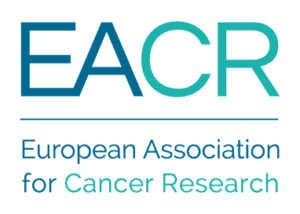In this episode, we are directing our attention to the emerging field of cancer neuroscience. Increasing research efforts have been directed towards the study of peripheral neurons infiltrating the tumour and its microenvironment, as it becomes apparent at the moment that tumour innervation plays an important role in cancer progression, including for non neural cancers.
Our guests in this episode:
- Dr. Andreas Trumpp, Professor and Head of Stem Cells and Cancer Division at the the German Cancer Research Center (DKFZ), and Managing Director of HI-STEM, the Heidelberg Institute for Stem Cell Technology and Experimental Medicine
- Dr. Vera Thiel, team leader at the DKFZ and HI-STEM.
Our guests will tell us more about trace-n-Seq, a new technology they developed that enables the molecular characterisation at single cell resolution of neurons, innervating any organ or tumour in preclinical models. We will explore the applications of this technology in Pancreatic Ductal Adenocarcinoma, from deciphering neuron-cancer-microenvironment interactions, to revealing their impact on tumour progression and lastly, we’ll discuss the clinical implications of the discoveries made using this novel cutting-edge technology. Let’s dive into today’s topic.
Listen here, scroll down for the transcript and subscribe now via Spotify, Apple Podcasts, Amazon Music/Audible, Deezer or YouTube so you’ll never miss an episode. You can find all episodes and their transcripts here.
Our host is Dr. Alexandra Boitor, EACR Scientific Officer.
Episode transcript
Alexandra: This episode was inspired by your recent paper ‘Characterization of single neurons reprogrammed by pancreatic cancer’ published earlier this year in Nature. Your labs have a longstanding interest in stem cells, so before discussing your paper, I would like to ask you what directed your attention to the study of tumour innervation?
Andreas: Well we realised that there is a lot of omics analysis of tumours, actually more than 10,000 cancers worldwide have been sequenced, and that will give us information about mutations that happen actually in the cancer cells. And if you do transcriptomic analysis, you also get information about the different cell types present in the tumour ecosystem. But what was lacking in all those data sets is the information of the neurons. And this is the reason why we got interested in neurons, because it was known since decades, based on work from surgeons, based on work from pathologists, that most of our cancers are also innervated by neurons, peripheral neurons if we talk about carcinomas.
Now, what’s in the tumour are the nerve endings, and the real cell bodies of these nerve endings are actually not in the organ where the tumour is, but they are in peripheral ganglia, such as the Celia ganglion or the dos root ganglia. So, the nuclei containing DNA and RNA of the tumour innervating neurons are not part of the actual tumour, which is used to cut out in order to make omics analysis, like next generation sequencing.
And so we figured, well it would be really interesting to develop methods to also characterise tumour innervating neurons at the molecular and single cell level. And to do that Vera, here in the call, developed a method called trace-n-seq.
Vera: Exactly, yeah. This was, of course, the hard part, to identify these cells innervating these different tumours or pancreatic cancer, and to actually isolate the right cells, as the ganglia, of course, contain multiple neurons that can innervate different types of tissues and different types of organs at the same time. But we, of course, wanted to specifically isolate the ones that go either in the healthy organ or the tumour respectively. Which was then the hard part, and where we needed to introduce retrograd tracing into the method to really identify which of these cells actually projected into the pancreas, or then in the tumour respectively.
Alexandra: A major breakthrough that your paper brings is the development of the trace-n-seq technology, which allows, for the first time, for the molecular characterisation of tumour infiltrating peripheral neurons in non neuronal cancers. Can you please tell us a bit more about this novel technology and the way that it works?
Vera: Of course, yeah. So basically what we do is we inject the retrograd tracer directly into the organ of interest. In this case we looked at the pancreas or the pancreatic cancers. And then this dye basically, so we use the tracer fast blue, which is a dye that is then taken up by the axon terminals, which are present in the tumour microenvironment. And then this dye is retrogradly transported all the way into the corresponding ganglia, where it then specifically labels these cell bodies of interest, which we want to harvest.
And we developed these techniques of like harvesting the different ganglia subtypes, whether it is the sympathetic ones or the sensory ones that innervated the tumour, and were able to dissect them, dissociate them, and then use flow cytometry analysis to basically sort these labeled cells out in comparison to the ones that are not labeled and we’re not interested in.
Sounds now all very easy, of course, after the process is done. However, basically every single step was difficult based from the tracer injections from which tracer to use, the right digestion protocols because these ganglia are very delicate cells. And also then use a good flow cytometry to actually identify these cells to then use them for downstream processing and to use them for multi omic analysis.
Andreas: And very importantly, we basically compare neurons which go into the healthy pancreas with neurons which project into the tumour, and then we actually compare what’s the difference at the molecular single cell level.
Alexandra: So that’s what I wanted to ask you next, because using this technology, as you said, you looked both at the innervation of the healthy pancreatic tissue and several preclinical pancreatic ductal adenocarcinoma models. So what are the main differences that you observed between the innervation of the healthy and malignant pancreatic tissue?
Vera: We see actually a lot of different approaches, or like different things, in these pancreas versus pancreatic cancer innervating neurons. First of all we see, both when we just actually look at what we find in the tumour, is that we find extensive sprouting of these neurons, which we could show are really only due to intense activation of sprouting, not due to infiltration by new neurons, or any development of new neurons. Based on their transcriptomic level, we could also actually see that they start intense sprouting mechanisms and the cancers actually attracting also certain types of neurons rather than the others.
So, as we see great heterogeneity of neurons infiltrating the tumour in general, we also see a shift. Specific neuron subtypes are rather needed than others and then they change also when they actually innervate the tumour itself. So we see a lot of factors driving again exogenesis, we see a lot of neuropeptides change. We see actually transcription factors and metabolism genes changing.
We also actually see a lot of immune regulators. So that was also a major part that we found, that these neurons also drive an immune suppressive phenotype in the tumour microenvironment. So we could see that the nerves interact with basically every single cell type in the tumour microenvironment.
We could actually identify specific interaction partners and see that they are highly relevant, not just for the tumour cells themselves, but also for the other cells in the tumour microenvironment.
Alexandra: So my following few questions will address the clinical impact of your study. But before we move away from the ability of tumour infiltrating peripheral neurons to control the tumour microenvironment, as you alluded to earlier, I would like to ask you about the impact they have on tumour relapse or whether there is an impact that innervation could have on tumour relapse.
Although not many PDAC patients have resectable tumours, my understanding is that the primary potentially curative treatment for pancreatic ductal adenocarcinoma would still be surgery and local reoccurrence of pancreatic ductal adenocarcinoma after initial resection is a significant concern in that case.
Does the presence of tumour infiltrating peripheral neurons impact on the ability of an excise tumour to relapse?
Vera: Yes, you’re absolutely right. Sadly for a lot of patients, surgery is not an option. But for the ones that it is, this is of course very important to consider. And we indeed did analysis in which we could see that, even if you actually resect a primary tumour in a mouse model, you could actually see these cancer induced changes that happen in the nervous system are even maintained even months after the tumour was resected.
So basically they get into this specific cancer nerve state and at least partially maintain into this cancer nerve state. We can, of course, not know for sure if these changes stay your entire life. Therefore more experiments would be necessary. But we do see that, specifically after the resection, they maintain that state and can of course then still signal to the maintaining microenvironment in this specific state.
We also did experiments where we injected secondary tumours and we saw that nerves that were already primed into this cancer nerve state, also induced a faster outgrowth of basically a secondary tumour, which mimics the relapse. And when we silenced these neurons, this effect was mitigated.
So really showing that targeting the nervous system also beyond curative surgery might be very important in the clinics to keep patients also tumour free for a longer time.
Andreas: By translating this, as you already indicated, it’s only about 20% of the pancreatic cancer patients, which are eligible for surgery. But it becomes even more important that the surgeons take out the tumour entirely. This is often not completely possible. So it is however possible to then after the surgery, sort of preventively, block neuronal activation to inhibit outgrowth of a relapse.
Vera: There are also a few retrospective studies showing for different variety of tumour types, that patients who also take beta blockers, just as treatment for other diseases, often have a better outcome, less metastasis and fewer accounts of relapse actually. So really showing also that this research is very important for tumour free survival.
Alexandra: Thank you for explaining this so much better. We didn’t get to discuss all the details in your paper but one of the novelties that your paper shows is how these tumour innervating neurons interact with cancer associated fibroblasts. Now, cancer associated fibroblasts can significantly impact the effectiveness of immune checkpoint inhibitors by creating an immunosuppressive tumour microenvironment. Do tumour innervating neurons have an impact on PDAC response to immunotherapy?
Andreas: This is still unclear however, from data Vera generated, we have evidence that the tumour innervating neurons indeed have an influence on the CAFs and actually promote their tumour suppressive function. Moreover, if we block the peripheral nerves, then these tumour suppressive CAFs change their fate and develop into pro-inflammatory CAFs, which lead then to the stream of incoming lymphocytes, potentially also T-cells. And indeed we did a small preclinical trial by combining chemotherapy like Nabpaclitaxel with immune checkpoint inhibitors and indeed found that immune checkpoint inhibitors, after blocking the peripheral nerves, would all of a sudden work also in pancreatic cancer.
It’s known that, under normal circumstances, immune checkpoint inhibitors have no function in pancreatic cancer, clinically. So these data together was data where we actively also blocked, in a more systemic way, the peripheral nerves, could show that this leads to the potential efficacy of immune checkpoint inhibitors and we are currently planning a clinical trial addressing this in patients.
Alexandra: I think it’s also very important to note that your paper also casts some light, to further elucidate the mechanisms of action of some standard treatment regimens in the clinic. Moving on with the conversation, because you’ve mentioned wanting to move into clinical trials. I wanted to ask you, what are the next steps or future directions that you plan to pursue with this study?
Andreas: Well, what Vera has shown is that by a systemic blockade of sympathetic, as well as chemotherapy mediated blockade of the sensory neurons, tumour growth is strongly inhibited. Moreover, as I just alluded, this may also lead to a better effectiveness of checkpoint inhibitors. So what we are currently planning is to block the Celia Ganglion, and we will do that by a specific type of radiotherapy. Combine this with Nabpaclitaxel, which we showed in the paper would block sensory neurons. Combine this with gemcitabine, a classical chemotherapy, which is typically given in combination with Nabpaclitaxel, and then add on top two arms plus minus checkpoint inhibitor. So this is a Phase 1/Phase 2 multicenter trial, which is headed in Heidelberg, but with other centers in Germany where several comprehensive cancer centers will contribute too.
Alexandra: I’m looking forward to reading more about the progress that you’re making with this study.
Andreas: We are in the initial planning stage, so we expect that the trial may start to recruit patients by mid 2026. So it will actually take probably another year until we, can actually have that trial started.
Alexandra: Still sounds like a very promising avenue to pursue for pancreatic cancer patients.
Vera: In the meantime, we’re of course also looking to extend our knowledge on cancer neuroscience. Now going also a bit away from pancreatic cancer, looking at different cancer entities as well as their metastatic sites. If we find actually common changes between different tumour types, between the metastasis, to really see what impact these cells also have on different tumour entities. Because, like Andreas said clearly in the beginning, these data sets are missing so far for basically every single tumour entity outside of the brain. So this of course, and very interesting also to hopefully target this in the future in a clinical trial after the preliminary experiments.
Andreas: You basically use trace-n-seq to actually generate a pan- cancer atlas of cancer innervating neurons to any tumour type in the trunk. So that includes breast cancer, pancreatic cancer of course, what we already studied, liver cancer, colon cancer, and many others.
Alexandra: It sounds like it might be good news for a larger range of cancer patients in the end.
Andreas: We hope so. It certainly adds one important component of the tumour microenvironment, which was so far pretty much neglected or inaccessible at the molecular level.
Alexandra: But now with this new technology that you’ve developed, there’s an opportunity for more researchers to come on board and help to further elucidate the role of the nervous system in cancer development.
Andreas: That’s absolutely right. And as you probably know, the field of cancer neuroscience is currently exploding and worldwide. Researchers as well as clinicians are very excited about these new options. And there are lots of activities to now integrate the peripheral nervous system also in the overall tumour ecosystems in patients.
Alexandra: Thank you very much to both of you for agreeing to meet with me today and tell me and our listeners more about your fascinating research.
Andreas: It was a pleasure. Thanks very much Alexandra and the EACR.
Vera: Yeah. Thank you very much. It was a lot of fun.
Enjoyed it? Stay curious with The Cancer Researcher Podcast. Subscribe now via Spotify, Apple Podcasts, Amazon Music/Audible, Deezer or YouTube so you’ll never miss an episode. You can find all episodes and their transcripts here.
Suggest a topic for a future episode: What would you love to learn more about? Click here to give us your topic suggestions in a short online form. We warmly welcome your ideas and input!








